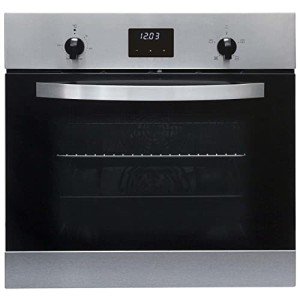8 Tips To Boost Your Hob And Oven Game
Understanding Hobs and Ovens: The Essential Kitchen Appliances
In the realm of kitchen appliances, couple of items are as vital as hobs and ovens. These appliances form the foundation of culinary activities, making it possible for individuals to create everything from easy meals to elaborate feasts. Comprehending Ovens And Hobs , types, and performances of hobs and ovens can significantly enhance one's cooking experience. This post dives into the complexities of hobs and ovens, supplying insights that accommodate both beginner and experienced cooks.
What Is a Hob?
A hob, typically referred to as a cooktop or stove top, is the flat surface area on which pots and pans are placed for cooking. Hobs are equipped with heating elements that produce the needed heat for cooking food. They are available in various kinds, consisting of gas, electric, induction, and ceramic alternatives. Each type uses unique benefits and disadvantages.
Types of Hobs
Gas Hobs:
- Heat Source: Natural gas or lp.
- Advantages: Instant heat control and responsiveness, chosen by numerous chefs for exact cooking.
- Drawbacks: Requires a gas connection and can be less energy-efficient.
Electric Hobs:
- Heat Source: Electric coils or smooth glass-ceramic surfaces.
- Advantages: Generally easier to clean up, even heating, and extensively available.
- Disadvantages: Slower to heat up and cool off compared to gas.
Induction Hobs:
- Heat Source: Electromagnetic currents.
- Benefits: Quick heating, energy-efficient, and just heats up the cookware, not the surrounding surface.
- Disadvantages: Requires compatible cookware (ferrous products).
Ceramic Hobs:
- Heat Source: Electric and has a smooth glass surface.
- Advantages: Sleek appearance, simple to clean, and even heating.
- Drawbacks: Can take longer to warm up and cool down.
What Is an Oven?
An oven is an enclosed appliance that cooks food by surrounding it with dry heat. Ovens can be standalone systems or integrated with hobs in a single device called a range. Ovens are flexible tools that can be utilized for baking, roasting, broiling, and more.
Types of Ovens
Standard Ovens:
- Heat Source: Electric or gas.
- Benefits: Good for traditional baking and roasting.
- Downsides: Can have uneven heat circulation.
Convection Ovens:
- Heat Source: Electric or gas with a fan for distributing air.
- Advantages: More even cooking and much faster cooking times due to airflow.
- Drawbacks: Can be more expensive and may require adjustments in cooking times.
Microwave Ovens:
- Heat Source: Microwaves.
- Benefits: Quick cooking and reheating; terrific for thawing.
- Downsides: Can not brown or crisp food well.
Steam Ovens:
- Heat Source: Steam generation.
- Benefits: Retains nutrients and moisture in food, much healthier cooking option.
- Drawbacks: Longer cooking times and usually greater cost.
Secret Differences Between Hobs and Ovens
While hobs and ovens serve the primary function of cooking food, their performances and utilizes differ substantially. The following table sums up these key distinctions:
Feature
Hob
Oven
Cooking Method
Direct heat
Enclosed heat
Primary Use
Boiling, sautéing, frying
Baking, roasting
Heat Source
Gas, electric, induction
Gas, electric, steam
Cooking Area
Flat surface
Enclosed space
Cooking Time
Normally quicker
Varies based upon meal
Control & & Precision
Immediate and direct
Depend on settings and timers
Benefits of Using Hobs and Ovens Together
Integrating the use of a hob and an oven can significantly boost the cooking procedure. Here are some advantages:
- Versatility: Different types of food can be cooked at the same time.
- Effectiveness: Using both enables for different cooking techniques, such as burning on the hob and baking in the oven.
- Time-Saving: Multi-tasking can significantly reduce general cooking time.
Upkeep and Care
To ensure the durability of hobs and ovens, regular upkeep is essential. Here are some ideas:
For Hobs:
- Clean spills immediately to prevent staining.
- Use appropriate cleaners for specific products (e.g., ceramic cleaner for glass-ceramic hobs).
- Frequently check gas connections for leakages (for gas hobs).
For Ovens:
- Wipe down the interior after each use to avoid accumulation.
- Use self-cleaning functions if available, or apply oven cleaners for hard stains.
- Regularly inspect seals and gaskets for wear and tear (to maintain heat efficiency).
Frequently asked questions About Hobs and Ovens
1. What is the best kind of hob for a newbie cook?
Answer: A ceramic or electric hob is often advised for novices due to ease of use and cleaning.
2. Can I use any pots and pans on an induction hob?
Response: No, induction hobs require cookware made from magnetic products (e.g., cast iron or stainless steel).
3. How typically should I clean my oven?
Response: It is suggested to clean your oven every couple of months, or more frequently if you utilize it often.
4. Is it better to bake in a stove?
Answer: Yes, stoves are often better for baking as they supply even heat distribution. However, some delicate recipes may take advantage of conventional ovens.
Understanding the performance and distinctions between hobs and ovens is vital for any cooking lover. Whether one chooses the instantaneous heat of a gas hob or the precision of an induction cooktop, each type provides unique benefits. Likewise, ovens differ commonly in function, from traditional baking to steam cooking. By valuing these devices' roles in food preparation, cooks can boost their culinary abilities and enhance their kitchen activities.
